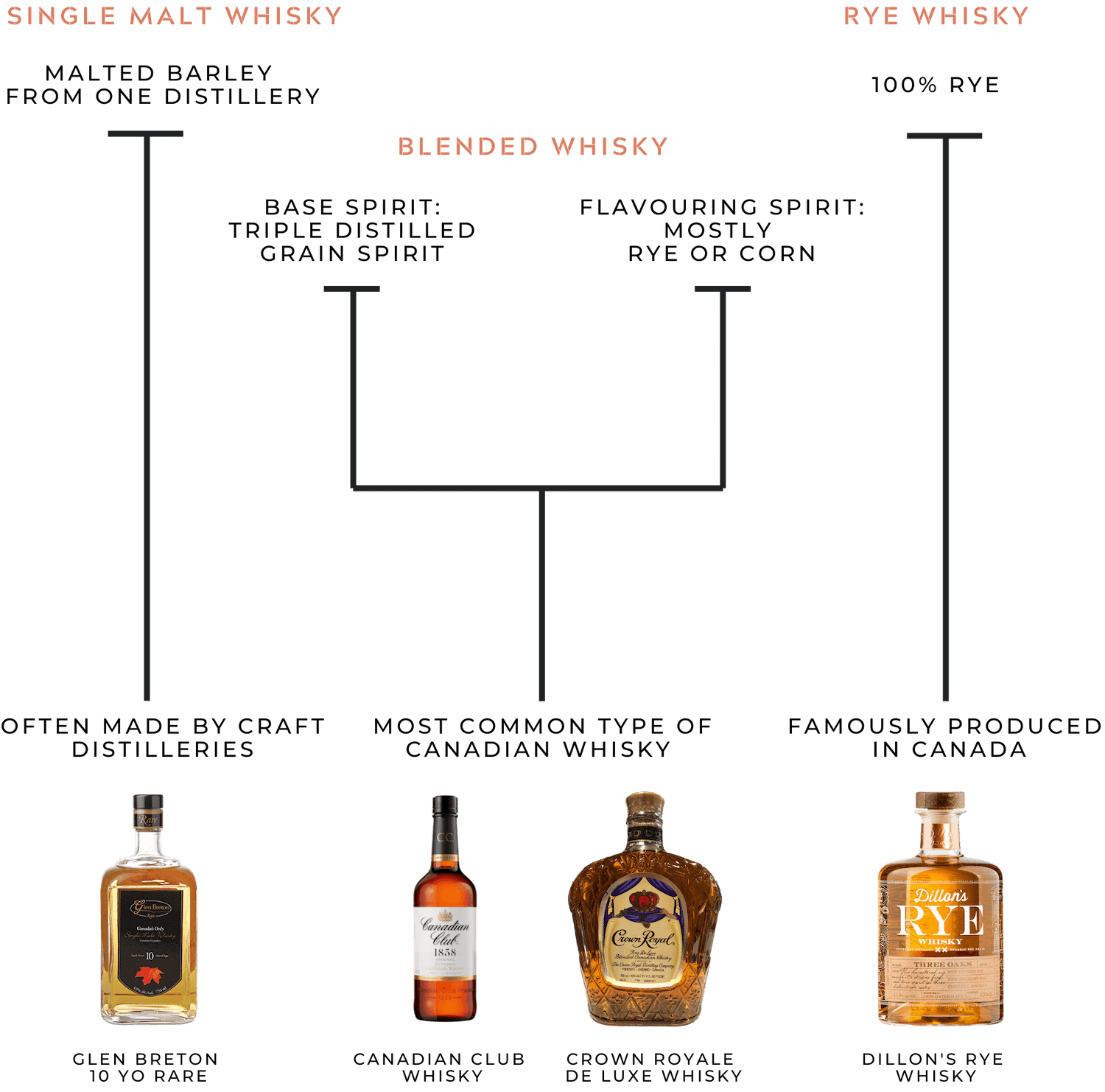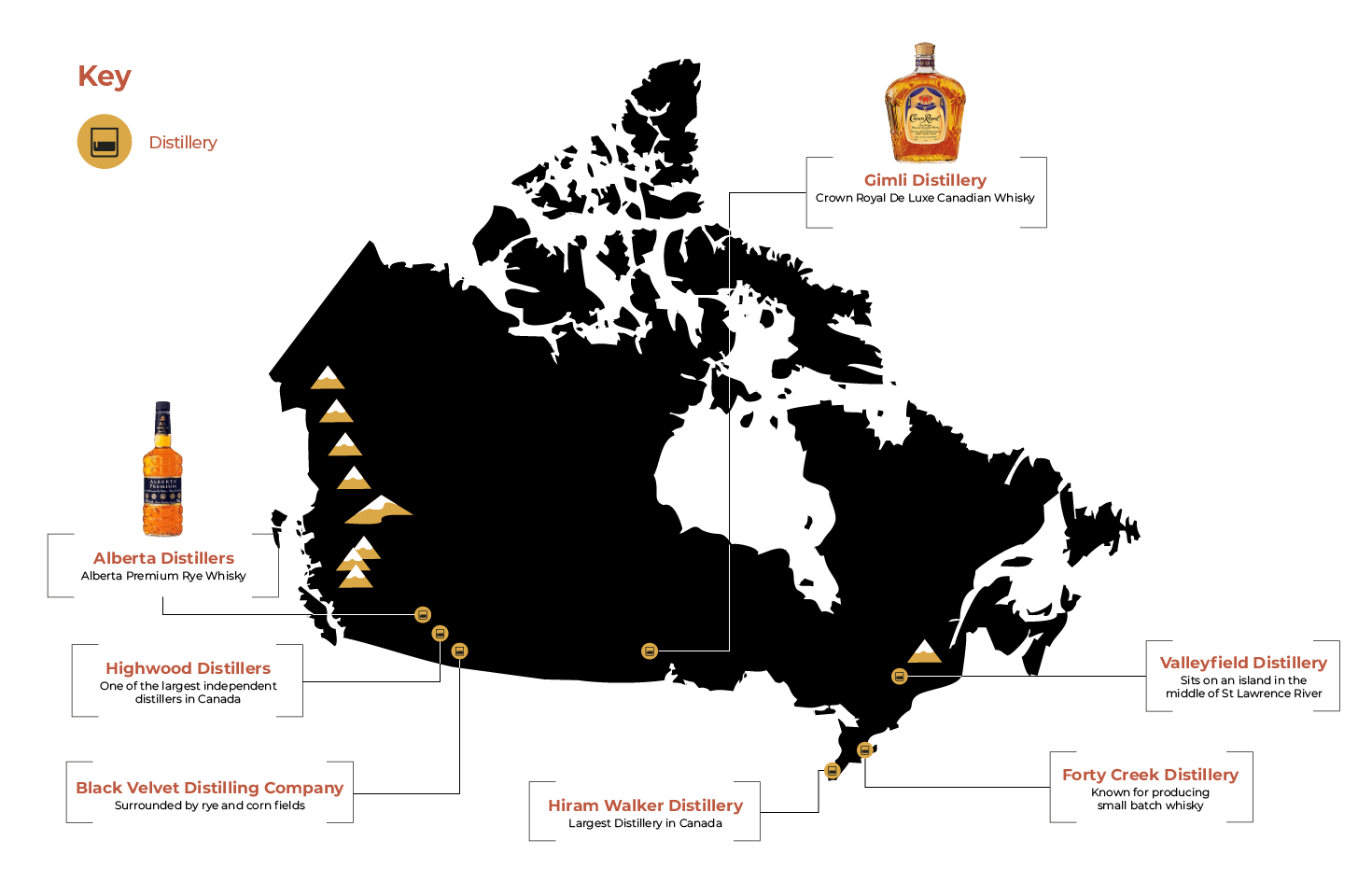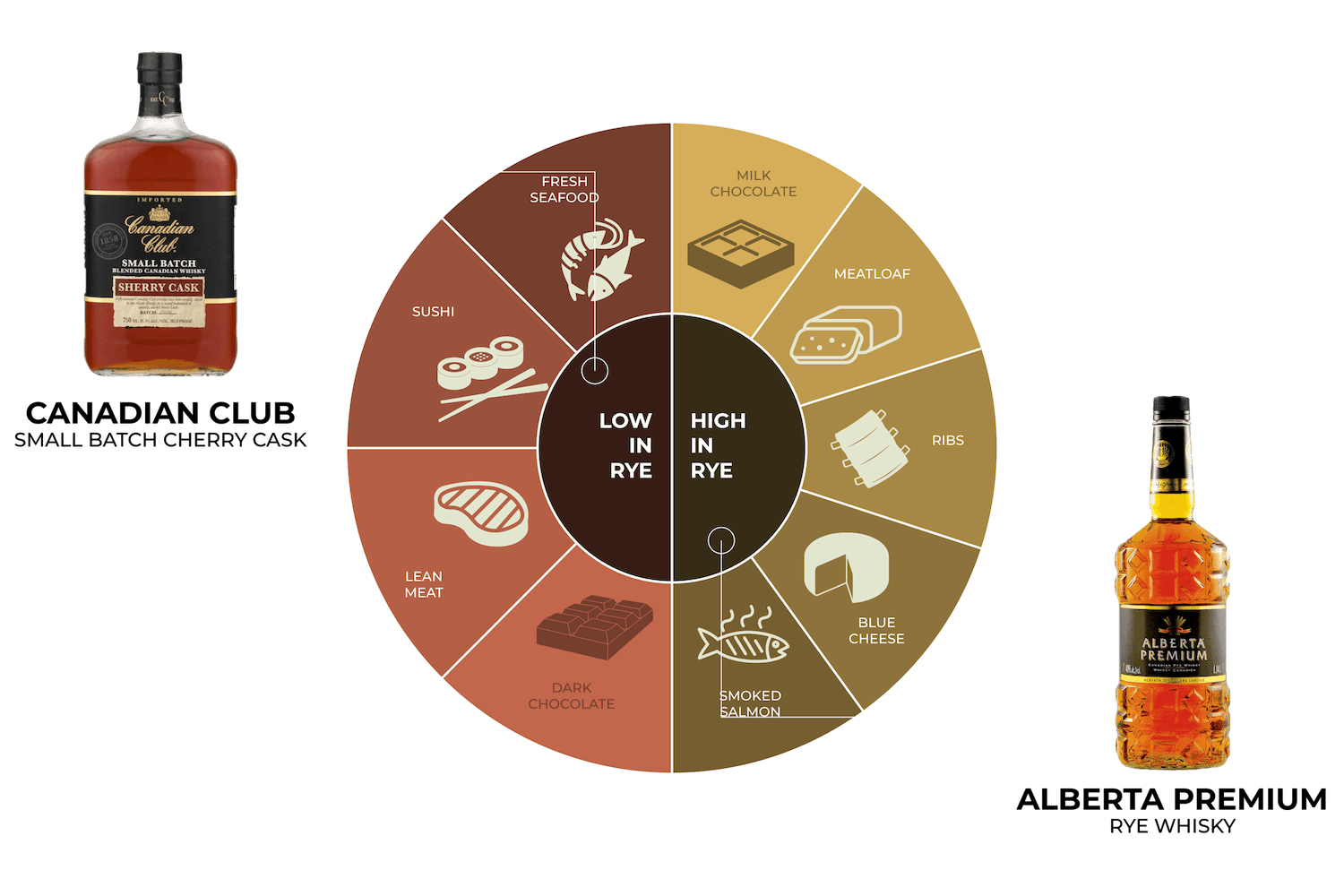Canadian whisky shares many of the same characteristics as its North American brethren in the United States as well as maintains strong links to Scotch whisky.
Similar to Scotch, Canadian whisky distillers can use barrels previously used in the production of other spirits, such as sherry and rum, whilst also using various types of grains during distillation in order to create unique and differentiated flavours, exactly like American whiskey does.
Canadian whisky must also be entirely distilled within Canada and be aged in oak for at least three years.
The fact that Canadian whisky is allowed to jump freely between production methods and has almost no restrictions around how it can be produced, means its distillers can craft some seriously interesting drops. For more on the rules, read this handy article.
When it comes to the types of Candian whisky available to purchase in the market, you will find that a large proportion of the blended whiskies available are made from a lighter, triple-distilled grain spirit and a smaller amount of richer, often rye-heavy but also potentially corn-heavy, flavoring spirit.
That being said, Canadian distillers do produce other types of whisky products, including single malts, although these are usually produced by smaller craft distilleries.
Canadian distillers also sometimes follow their Japanese counterparts in creating blended whiskies where the individual spirits used in the final blended product all originated from one distillery, from a range of grains.
Seeing as there are very few laws governing the production of Canadian whisky, the types of grains used in its production can vary, however, Canadian distillers are famous for being particularly fond of using rye grain in the production of their whiskies, with some making whiskies from 100% rye - a spicy and bitey experience!
More recently, however, corn is becoming extremely popular amongst Canadian distillers as their preferred grain of choice as it imparts a sweet and silky taste and texture to the whisky, similar in style to other North American whiskeys, including bourbon and Tennessee whiskey.
For those seeking a general classification for how Canadian whisky tastes you will find that most of the bottles you can readily purchase will be some of the easiest drinking whisky you can buy, making it ideal for mixing or as an introduction to those just entering the world of whisky.
There are currently eight large whisky producing distilleries in operation within Canada, however, there is an increasing number of smaller micro-distilleries popping up across the large expanse of the country.
Due to the limited number of restrictions placed upon distillers in Canada, each producer imparts their own unique methodology on how whisky is made, making it difficult to pin down one standardised process used by all.
Two features that are common amongst most Canadian whisky distilleries, however, are that they tend to produce all of the whiskies used in the final blend themselves, with sharing between distilleries rare, and they opt to mostly distill and mature each grain separately, only blending them just before they go into the bottle before being sold.
The largest distilleries in Canada are Valleyfield, Hiram Walker, Canadian Mist, Forty Creek, Gimli, Highwood, Alberta Distillers, and Black Velvet, who are collectively responsible for creating the most popular Canadian whisky brands on the market, including Canadian Club, Crown Royal, and J.P. Wiser’s.
When selecting your preferred bottle of Canadian whisky, you can be confident of the fact that whatever it is that you choose it will be smoother and easier to drink than many bottles of Scotch whisky and it is for this reason that Canadian whisky is experiencing such a renaissance.
For more on this topic and some other recommended bottles, consider this article.
Due to the smoothness, approachability, and gentle complexity of most Canadian whiskies found today, it is very easy to enjoy them in the same fashion as other whiskies from around the world.
With this in mind, having them neat on their own, over ice, or with a splash of water represents the most common methods of enjoying these whiskies, however, for those starting their whisky journey it is important to consider the specific bottle you’re having before jumping straight in.
As discussed above, some distillers are fond of making rye their preferred grain of choice, which can make for an incredibly spicy, peppery, and heated drinking experience, not ideal for whisky first-timers.
For those just starting out, make sure to look for bottles such as the Canadian Club Small Batch Sherry Cask, which is famed for its exquisite sweetness, as bottles such as this one are ideal sipping whiskies that can be enjoyed straight.
Pairing food with Canadian whisky can be a thoroughly rewarding experience as many dishes complement the rich complexity found in the bottles.
Those products high in rye match extremely well with oily and fatty foods, smoked salmon, or blue cheese.
For the majority of Canadian whiskies that are smoother, characteristically gentler, and slightly sweet, we recommend pairing meat dishes low in oils or fat, seafood dishes that aren’t heavily sauced or spiced, and sushi.
You might be familiar with bourbon & Tennessee whiskey but do you know about the other types of whiskey coming out of America? Discover more in this deep dive guide.
All over the world, the craft revolution has taken control. In this deep dive guide, we shine some light on what’s happening in the world of craft vodka in Australia.
You’ve seen them on the shelves at bottle shops & bars but how much do you really know about tequila & it’s lesser-known relative mezcal? We uncover both of them in our in-depth guide.



